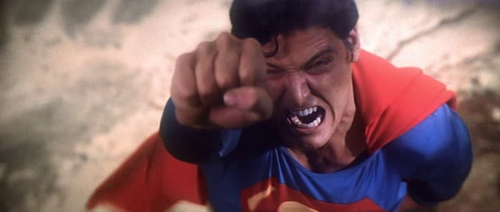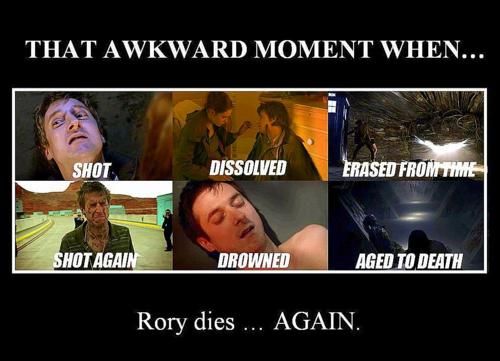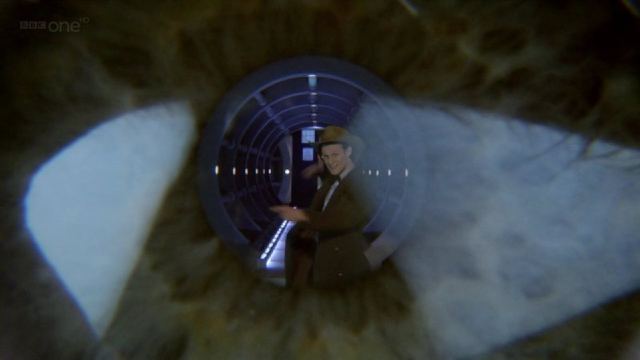Now that everyone who has wanted a reasonable chance to see Avengers: Infinity War and Ant-Man and the Wasp has had it, I can get SPOILER-y and talk about a strange coincidence I noticed. This is not an Easter Egg, unless you think there’s hidden meaning in using the same ineffective screenwriting trick in two consecutive movies.
Avengers: Infinity War is like a Russian Nesting Doll of MacGuffins. Thanos is on a quest for the six all-powerful MacGuffins that will power his MacGuffin Glove and give him the power to MacGuffin away half of all life in the universe. This is probably on the order of quintillions of lives at least, so since we care when one character dies, we should automatically care quintillions of times about this, right?
Well, not really, and we could have a whole separate conversation about how we in the audience abstract numbers and concepts too big to comprehend, and so don’t interact with them with the same sense of empathy – see J.J. Abrams nuking five planets’ full of randos in The Force Awakens to show off the power of Starkiller Base and not achieving anywhere near the emotional impact of the destruction of Alderaan, from which we had at least one, living representative on-camera to provide some emotional immediacy and connection.
What matters in Infinity War is that we have all these mega-powerful objects that Do Things, so we want the Good Guys to have them so the Bad Guys won’t do Bad Things with them. That’s all fine. But what it triggers is a remarkable progression of side quests whose common thread is that they require so much explaining.
Thanos: So what do I have to do to get the Orange MacGuffin?
Red Skull: Blah blah blah the power of the MacGuffin, the POWER blah blah blah.
Thanos: Please to be cutting to the chase.
Red Skull: Hurl your daughter off a cliff because reasons.
Thanos: Dig. *hurls daughter*
We get a lot of environments and character appearances in this movie that are a riot of visual design and Marvel lore deep pulls; but which ultimately take a lot of oxygen away from the emotional strength of the very simple dramatic actions they surround. The Soul Stone sequence is actually one of the best dilemmas in the movie because it complicates our perception of Thanos to see that he is actually capable of love; and this is the one moment where he at all reflects seriously on whether he wants to carry on with his cockamamie Malthusian Doom Preventative Genocide. Good drama right there.
And here is bad drama:

Eitri: Welcome to Planet MacGuffin. The only way to defeat Thanos is with the Legendary MacGuffin Sword.
Thor: Yes, we have come here to Planet MacGuffin for that thing.
Eitri: But we cannot make it until you re-start the MacGuffin Device.
Thor: Then I will do that, since otherwise we’re all just standing here talking loudly.
Eitri: But wait! The only way to re-start the MacGuffin Device is to stand in that beam of Pure MacGuffin Energy, which will definitely kill you.
Thor: It is weird that you would design a MacGuffin Device that way; but so be it. I will stand in the deadly MacGuffin beam, since it is the only way to get the MacGuffin Sword which only I can wield.
Eitri: But it makes no sense to die making a weapon only you can wield, since as I will repeat now for the benefit of viewers who weren’t listening before, it will for sure, 100% murder you absolutely. We are now instructing you, the audience, to believe you are about to watch Thor die and cry accordingly.
Thor: *doesn’t die*
Eitri: Womp womp. Here is your sword. Come back in the sequel, please!
Thor escapes what we were told was certain death using a bit of movie magic I like to call Squinty Power – where a character reaches beyond their limits and does the seeming impossible because everything is at stake and they squint and yell a lot and so for that reason it just works.

Squinty Power is a cheat, and pretty silly once you start watching for it; but I won’t deny it’s a cheat that can really work when fulfilling an emotional arc. Emotion rules in movies, plain and simple. You don’t need to stop for a Powerpoint presentation on the radiation resistance of Asgaardian flesh in order for an audience to believe in Thor’s survival. You can even accept his cheating of death as a form of Deus ex Machina if you believe he is completing a catharsis, or reaching an emotional epiphany about, say, the death of his world and family.
But Thor putting himself in lethal danger here doesn’t resonate with any of that. It is just a physical obstacle that has been placed in his path in the middle of the movie on his way to the revenge he imagines will actually exorcise all that stuff. For me, the whole sequence provided no emotional lift and so came off as faintly ludicrous.
So, okay, in having to choreograph the movie blockbuster equivalent of a Superheroes on Ice show where every one of 40+ characters needs to get their moment, the filmmakers got a little sloppy in one corner. We can forgive that. But what happens, only a few months later, in Ant-Man and the Wasp?
Janet van Dyne: Help me my husband, for I am trapped in the MacGuffin Zone – a realm totally unlike your world, where the laws of space and time do not apply.
Hank Pym: We will do whatever it takes to find you!
Janet van Dyne: But if you don’t find me before this giant ticking clock reaches zero, then you will definitely be doomed to not find me for 100 years.
Scott Lang: That is weirdly specific for a realm where the laws of space and time do not apply.
Janet van Dyne: DO NOT QUESTION THE WAYS OF THE MACGUFFIN ZONE.
Hank Pym: Oh noes! The giant ticking clock reached zero, and my brilliant wife swore to me that if I had not found her by this exact moment, she would be lost for 100 years. I HAS SO MUCH SAD!
Janet van Dyne: Hello I am your wife.
Hank Pym: Womp womp.
They, of course, overcame the weirdly-specific rules of the MacGuffin Zone Quantum Realm with The Power of Love, which is like the heart’s version of Squinty Power. As with Infinity War, this isn’t even the climax of the movie; it’s a stop on the way to a bunch of other stuff; which makes it kind of a waste of a miracle. And because the Ant-Man movies have such a nervous attitude about even dipping their toes into Hank Pym’s storied history of being a monstrous a-hole to his wife, you don’t even have that available as a chance for him to redeem himself, or experience emotional growth that’s specific to his character.
I see a common error here, which I’m calling Womp Womp Stakes; where a movie too hastily attempts to manufacture all-or-nothing, life-or-death scenarios that require a lot of set-up in dialogue because you haven’t set them up well enough to be intuitively grasped by an audience; which are then immediately reversed without an accompanying emotional boost that might get you over it as an audience. It’s like a rollercoaster coming to a full stop mid-ride to stare at a picture of a giant Shruggie.
The dangerous flaws in a Womp Womp Stakes scenario are a) dialogue is usually your weakest screenwriting tool for accomplishing anything, so it’s hard to make it your primary strategy for getting audience buy-in at a life-or-death intensity of emotion, and b) an audience only believes in miracles so many times. If you miss the bullseye they just feel like suckers for caring; and you have to work that much harder to re-earn credibility with them.
I’m more sensitive to this stuff having just survived the Dr. Who tenure of writer Steven Moffat, who demanded Feels from us and then mocked us for believing him so many times that Fake Killing Rory became a damn meme.

Beyond even poor Rory, in the Doctor Who episode Let’s Kill Hitler, The Doctor got poisoned and then, apropos of not a damn thing, the TARDIS announced that his regeneration powers as described over decades of canon were suddenly canceled by this special MacGuffin Poison and so we were supposed to believe that The Doctor was really going to Forever Die…even though we were right in the middle of a season-long story arc where we saw him Forever Die in the damn premiere! Moffat nested a Fake Death INSIDE a Fake Death!

I’m happy to acknowledge that the writers of sci-fi, fantasy, and superhero stories are really damned challenged to keep coming up with MacGuffins that seem exciting and different but which once again channel our heroes into another climax of the Marvel Cinematic Universe’s trademark “Epic PG-13 Punch-Fight Against the Digital Hordes”. But life-or-death consequences you need to stop the movie to explain will never be as powerful as consequences you instinctively feel just by absorbing what’s on-screen. In the opening shot of the original Star Wars, you don’t need rebel troops saying “I hope that Star Destroyer piloted by the Evil Empire doesn’t hit us Heroic Rebels with their MacGuffin beam!” Even though the ships, the technology, the whole Galaxy of that movie is completely alien to us, as an audience we instantly absorb Little Ship, Big Ship, and shooting, and we get that adds up to Little Ship is in Danger.
Since the MacGuffin Infinity Stones offer power over Life, Reality, Time, and everything else, we are primed for next year’s Avengers movie to walk back as many of the on-screen deaths in Infinity War as the studio feels like. The Infinity Gauntlet is a Magic Reset Button there for the taking. And I would bet cash money that the miraculous return of certain characters might well depend on negotiations over their multi-film contracts. This could be the most expensive exercise in Womp Womp Stakes in the history of Hollywood.
I hope that won’t be so. Marvel actually is pretty consistent about clean, comprehensible communication of simple stakes, and downright ingenious at visually getting over radical concepts like Tony Stark’s new nanotech Iron Man suit or Wakanda’s many, many, many, many, many, many forms of Vibranium tech.
But this is something every writer needs to watch for. If you see yourself getting boxed into a situation where you could be creating Womp Womp Stakes; stop for a minute, back up, and love your audience better than that.